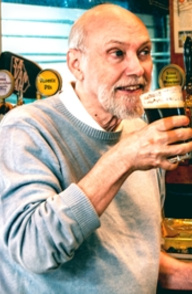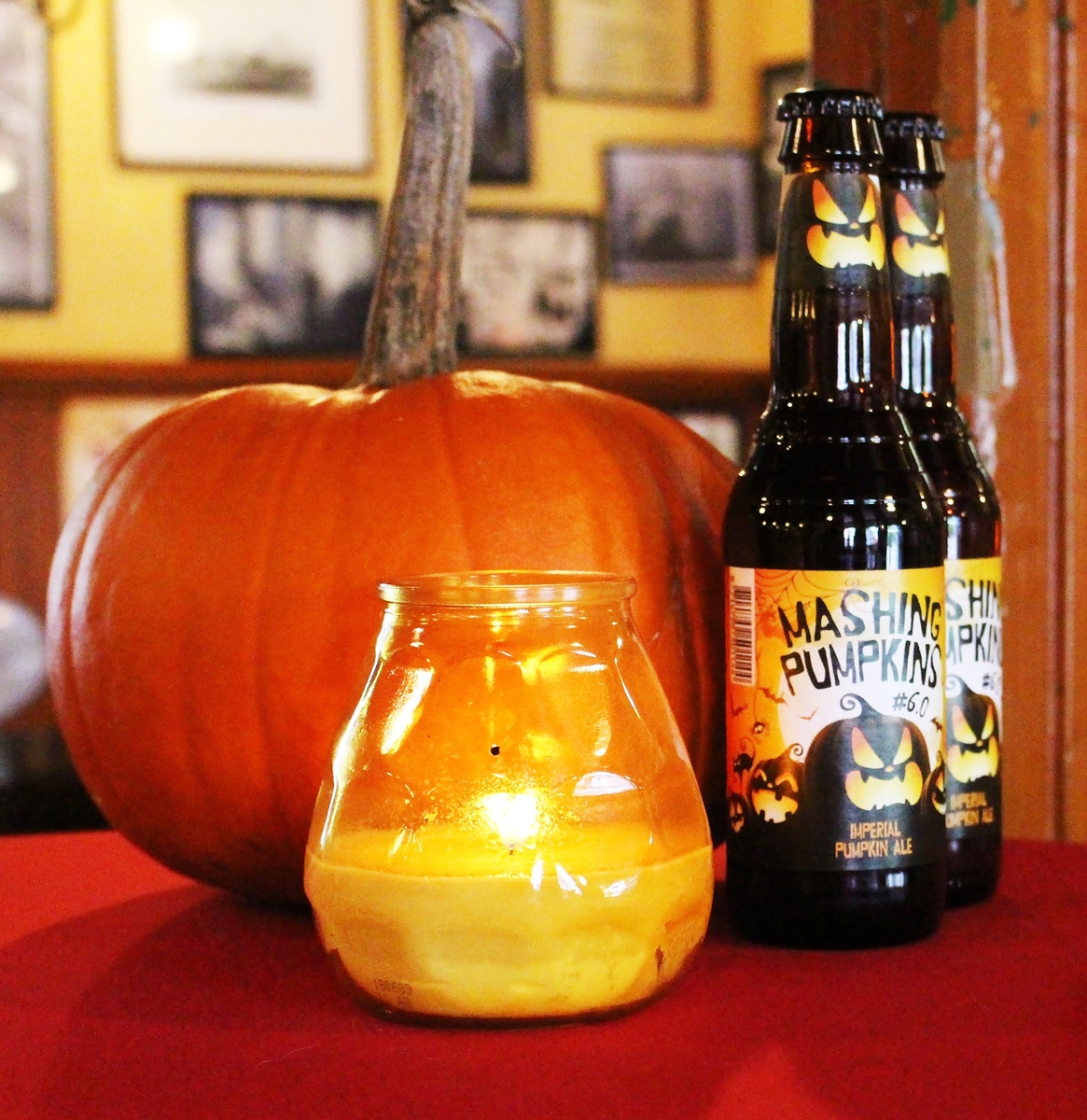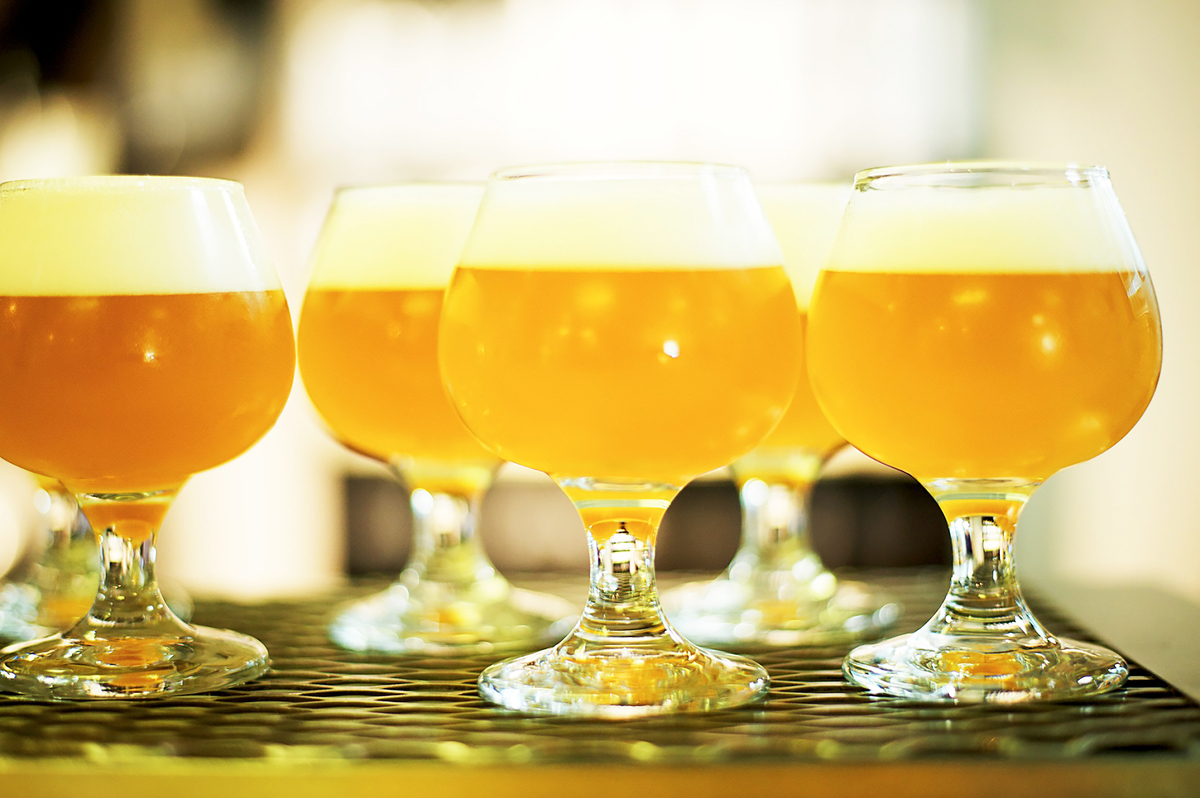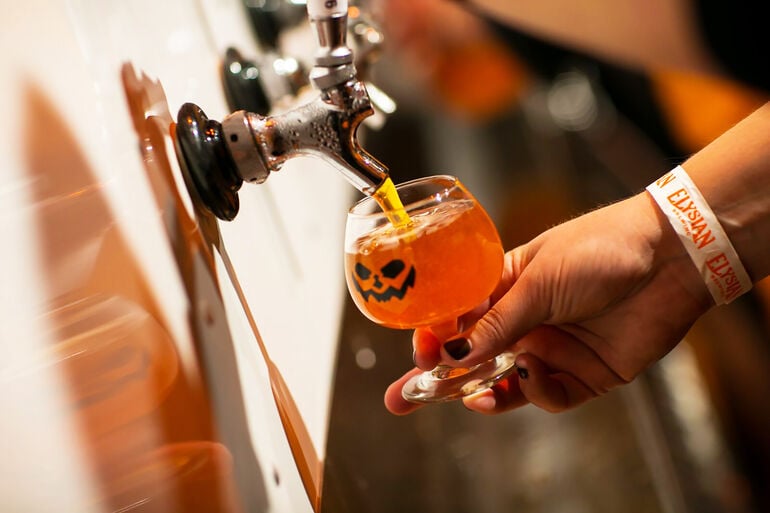Start 14-Day Trial Subscription
*No credit card required

Will Hazy IPAs Go the Way of Pumpkin Beers?
I remember when I used to have cravings for a pumpkin beer. The desire fell somewhere between a circadian rhythm – fall colors have arrived – and patriotism. We’re craft beer-loving, farm-to-table Americans, by God, and pumpkins are indigenous here.
Now, there’s a new thing for me. It’s year-round. And, apparently, I’m not alone.
I’m always ready for a juicy, hazy IPA that’s properly made and not fruited. In other words, hold the juice additive and bring out those citrus flavors through biotransformation, which means using an f-ton of dry hops, which are transformed by non-flocculating yeast. Then, give me more of that hop goodness by not filtering the beer and serving lots of yeast, which itself has been bio-transformed and therefore carries some of that hop goodness.
Everybody, of course, has their opinions about juicy, hazy IPAs. Those opinions range from disdain to irrational exuberance. There is some valid criticism: “They all taste the same – there are no nooks and crannies of aromas and flavors.” But the exuberance side is winning, helping to produce more entries for this newly created category at the Great American Beer Festival this year than the American IPA, the former festival leader.

My desire for pumpkin beers used to fall somewhere between a circadian rhythm – fall colors have arrived – and patriotism. We’re craft beer-loving, farm-to-table Americans, by God, and pumpkins are indigenous here.
Whichever way you like your juicy, hazy “New England-style” or “Northeast-style” IPA, it’s pretty easy to find one. Any brewer that previously felt it necessary to have an IPA in its line-up now finds it mandatory to have one with the word “juicy” or “hazy” in the name on the chalkboard or the package label. Even those disdaining the use of these two buzz words often draw attention to the use of the citrus hops most associated with the style.
There is an eternal craft beer question. Will this style go the way of pumpkin beers – another special approach that has gradually fallen into the category of beers championed by a few good brewing practitioners?
I don’t think so. The reason is not complicated. The juicy, hazy IPA style enables brewers to put in more aroma, more flavor and, above all, more hops. While not addictive, this craft brewing movement toward more aromatic hops and less emphasis on bitterness is not likely to slow down. According to the quantum leap in hopping rates occasioned by this style, we’ve all turned into hop heads.
Me? I don’t mind. But as usual, enquiring minds want to know.
There is a school of thought that hops actually alter brain function. While possibly true on some physiological level not yet discovered, I tend to believe the stimulation is more analogous to eating spicy food. There’s some sort of physical engagement with the hops going on, but it’s more of a recognition factor rather than, say, the brain producing endorphins in response to lots of hops suddenly suffusing through the blood stream.
Hops are not psychoactive in the manner of the related cannabis plant – a longstanding acknowledgement. Nobody suddenly hears a Jimi Hendrix riff better as a result of drinking a juicy IPA – or thinks they hear it differently. But here’s some interesting info I came across lately that may sound familiar to those who enjoy cannabis in one of its many forms.
According to evidence from hop-testers, the receptors in the brain may gradually lose responsiveness to hops over time. Hence, the need to provide a higher “dose” of hops to achieve the same influence or stimulation. It’s a stimulation that I equate to an upper, but one that falls somewhere in the neighborhood of caffeine, which is in fact psychoactive.
There is historical proof that hops have a sedative influence on the human brain. And there is the anecdotal evidence that a couple of truly hoppy beers can turn people into couch potatoes, especially those with a higher ABV. After the initial stimulation from hops, there’s the depressive qualities of alcohol coupled with the sedative effect.

Everybody, of course, has their opinions about juicy, hazy IPAs. Those opinions range from disdain to irrational exuberance.
Photo Courtesy Flickr/Breville USA
The bottom line is that there is not much research into the influence of hops on the human body, i.e. it doesn’t pay many dividends to look into it. The National Institute of Health, for example, has many avenues far more important to the health of the nation to look into than why people enjoy hoppy beer. Private industry, meanwhile, goes where the money is – such as exploring new ways to deliver cannabis via beverages in states where it’s legal.
As far as brewers are concerned, there’s a “hazy” outlook on any beer trend. Usually, brewers try to discount any theory behind ingredients or people responding to a particular style. Brewers prefer to keep feeding a trend according to what people are buying rather than trying to analyze it.
The pursuit by brewers is focused on finding enough of the currently most popular aromatic hops or seeking new types of hop combinations that feature well in hazy, juicy IPAs. They’re far more interested in how to use those hops than what influence they may have on the brains of the drinking public.
If serious investigation evolves into what the hell really goes on when a person ingests a lot of hops, the results might mean regulation. Nobody in the beer industry wants to go down that road, although hops would be far more likely to fall into the same neighborhood as caffeine. It’s up to individuals to regulate their own, in part because the harm of overdoing it is relatively negligible.
I would merely suggest that even compared to the days of brewers trying to hit 100 IBUs in a classic American IPA or a West Coast version with an emphasis on bitter alpha hops, most craft beer drinkers are taking in far more hops than ever before. In this sense, the relative lack of bitterness of aroma hops and the yeasty component of the juicy, hazy IPA play the role of enablers.
On a recent trip to Seattle and Vancouver, British Columbia, I had the best of both worlds when it comes to comparing pumpkin beers and their bounteous spices (and relatively low hopping rates) versus the trending IPA style.
The Pacific Northwest remains a part of the world that believes in having a well-made pumpkin beer available in the fall and I found some great examples of actual pumpkin beers at the Great Pumpkin Beer Festival, hosted by Elysian Brewing. (Actual pumpkin beer is the key phrase; the shortcuts of canned pumpkin or puree has helped accelerate the decline of the style, which benefits greatly from the brewing influences of actually using America’s gourd, which also adds a degree of difficulty.)
I also found some excellent juicy IPAs at places like Fremont Brewing and Pike Brewing in Seattle, plus Steamworks in Vancouver and Yellow Dog Brewing in Pt. Moody.
Over the course of eight days, I confirmed the stimulation of cinnamon, ginger, nutmeg and cloves mixed with an American gourd (sometimes also with yams, an OK additive) just doesn’t do much for my brain, and no more than, say, jalapeño juice in a martini. Give me those hops from Australia and New Zealand with citrusy flavors heaped into the tanks during fermentation and served with a side of bio-transforming yeast any day. If you insist on a more practical, homegrown and patriotic bent, no problem. Let’s do Mosaic and Citra. In other words: Give me Citra or give me death.

The Pacific Northwest remains a part of the world that believes in having a well-made pumpkin beer available in the fall and I found some great examples of actual pumpkin beers at the Great Pumpkin Beer Festival, hosted by Elysian Brewing.
Header & Footer Photo Courtesy Elysian Brewing



